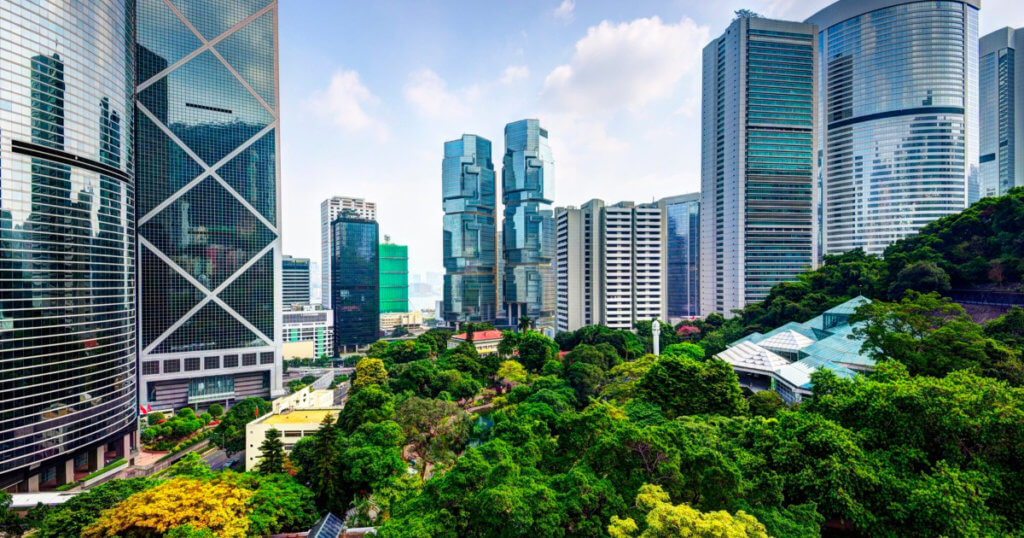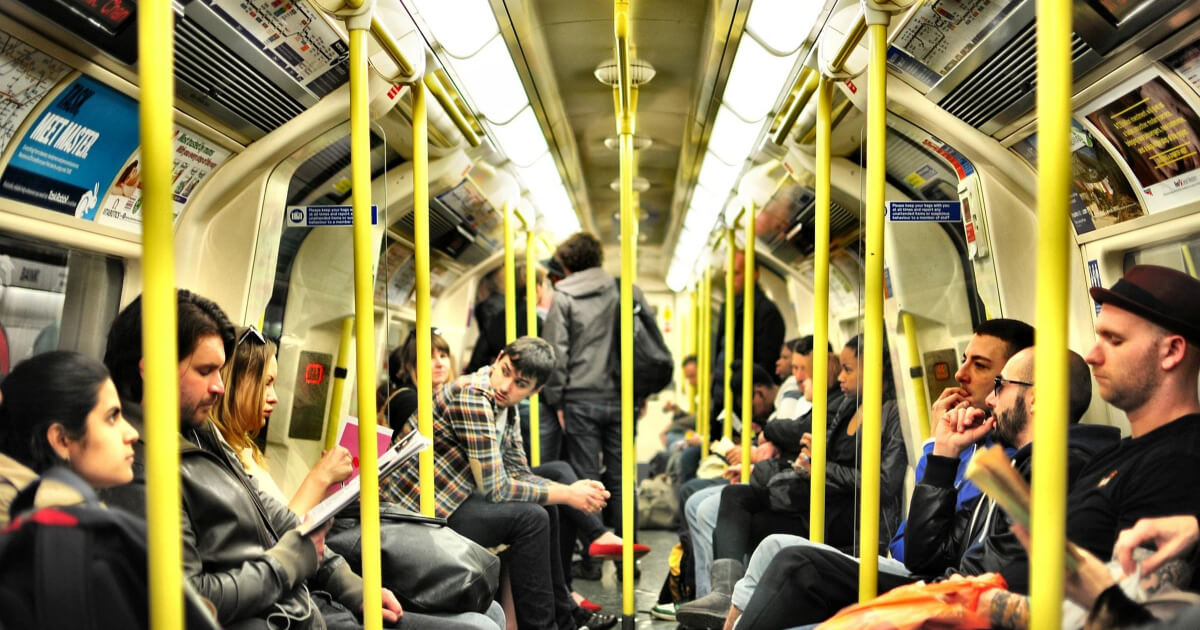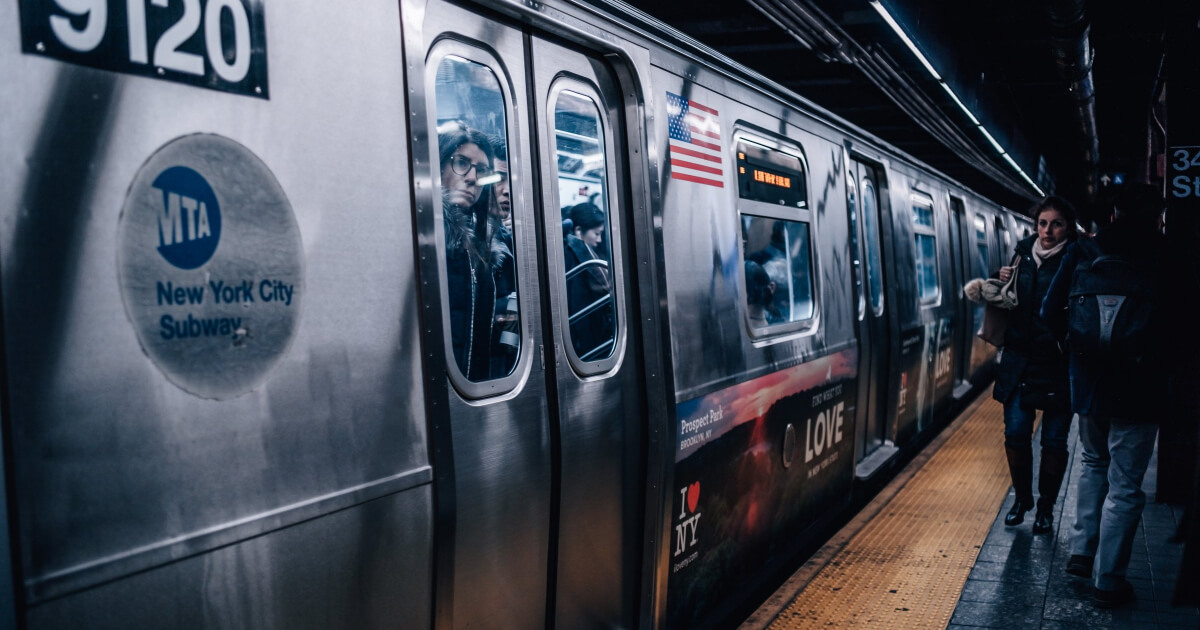
This sponsored content originates from City Possible, powered by Mastercard. You can view the original article here.
The quest for opportunity has been driving urbanization throughout history. From the ancient river towns of Mesopotamia to the explosive growth of cities during the Industrial Revolution to today’s urban renaissance, people are drawn to cities to make a better life for themselves and their families.
Today, roughly 55 percent of the world’s population are city dwellers. By 2050, it’s expected to reach 70 percent.
That’s a double-edged sword for urban residents and leaders. Cities are our primary engines of economic growth, generating 80% of global GDP. The continuing influx of diverse talent will continue to make cities hotbeds of innovation and job creation.
But this trend also increases the pressure on already-stressed urban infrastructures. Cities will be even more challenged to provide access to housing, transportation, utilities, education, and financial services. How can leaders ensure that all residents, regardless of social or economic standing, share in the growth and enrichment opportunities the city has to offer?
Inclusive urbanization is about making tech work for people, giving everyone access to economic, social and cultural opportunities and improving the quality of life for all—while making the best use of constrained city budgets and resources.
In putting together a strategic roadmap for inclusive, sustainable urbanization, here are seven key considerations.
1. City Residents Have Diverse Needs
Cities are vibrant because their populations are so diverse in age, ethnicity, race, and financial status. That translates to a wide spectrum of needs. Access solutions that are limited to specific service points will fall short in helping families who may require everything from transportation passes and school IDs to healthcare services, unemployment benefits, and emergency relief. In siloed systems, residents have to carry multiple access cards and spend time interacting with multiple agencies. It’s inconvenient for residents and inefficient for cities.
Replacing silos with a single tool that addresses identification and service needs across multiple life stages would solve both issues, simplifying user access while reducing operational costs. A unified city portal can simplify residents’ access to essential services — from social and educational benefits to transportation, banking and more.
2. The Key to the City is Digital
We live in a hyper-connected world in which more and more everyday interactions are managed digitally. People have become accustomed to 24×7 access to the services they want. And the coming generations will be even more demanding. Digital innovation is changing expectations around the speed, security, and customization of service delivery while opening a new pathway for cities to provide personalized access to basic services.
Take transportation. Globally, 65 percent of transit fares are still paid in cash, requiring people to wait in lines for paper tickets. When cities empower people to use payment cards and smartphones to access public transport, ridership grows and costs shrink. Mastercard Transit Solutions worked with the London transit system to complement its smartcard-based ticketing system with open-loop contactless ticketing. The result: less frustration for the city’s 19 million visitors and over £100 million annual savings for the transit system.
3. Data Insights Can Help Ensure No Resident Gets Left Behind
Unseen equality gaps can occur unless cities have a clear and detailed understanding of the service needs of their residents, down to the neighborhood level. Visionary urban centers around the globe are harnessing technology to prevent those gaps, setting up public-private sector partnerships that use data-driven approaches to boost economic mobility and improve services for residents.
For example, Chicago, Dublin, London, and other cities are using anonymous and aggregated merchant transaction data to assess their cities’ economic health at a hyper-local level. These insights help cities understand how certain events – such as holidays, extreme weather conditions or incentives – impact economic health, traffic patterns, and service access, to help inform urban planning and policy development decisions.
4. Inclusive Transit is the Fast Lane to Opportunity
Frictionless access to public transportation enables more residents to take advantage of the educational, cultural, recreational and business opportunities that draw people to urban life.
In contrast, a lot of cities that are highly congested or have transit deserts that render certain areas unreachable for many are less inclusive and less livable. Optimizing urban mobility goes beyond new roadways, subways, and rail lines. It involves rethinking strategies around transit subsidies, payment ease and demand management, and considering new approaches like digital contactless payments.
In New York, for example, the MTA Long Island and Metro-North rail lines initiated mobile ticketing with the assistance of Mastercard; in just three months, eight percent of tickets were being sold via smartphone apps. The MTA is now rolling out contactless ticketing across subway stations and Staten Island MTA buses. In Chicago, when commuters were given information and incentivized to avoid peak travel times, 18 percent shifted their commutes, reducing transit congestion.
5. Create a Financial Lifeline for Natural Disasters
Flooding. Fires. Heatwaves and snowstorms. Natural disasters are on the rise, and the disruption they cause disproportionately impacts vulnerable urban populations, such as the elderly, immigrants, and low-income residents. These population segments are often unbanked and lack access to financial resources in times of crisis.
Ensuring that all residents are taken care of in an emergency is fundamental to urban inclusion. Forward-thinking cities are strategizing on faster, more secure ways to distribute emergency funds to residents. In concert with public, private, and NGO aid organizations, an emergency preparedness chain, triggered by a disaster, is needed to ensure timely dispersal of aid to residents most in need.
6. Digitizing the Urban Social Safety Net
The rapid growth of urban areas is exacerbating the challenges of providing a social safety net for residents who need assistance with housing, education, transportation, and other basics. Cities face a two-fold challenge: how to meet the growing demand and how to administer these programs cost-efficiently.
In many aspects of urban life, the dominance of cash creates unnecessary friction, preventing residents from participating fully in programs and limiting governmental efforts to operate efficiently. Cities can streamline resident access to programs, enhance safety and security, and provide much-needed entry into the banking system by providing alternatives to cash. For cities, digital payment flows are easier to administer, control, and monitor, helping to prevent waste and improve efficiency.
7. Bold Cities are Leading the Way – Tap Into Their Expertise
Most cities lack a blueprint on how best to connect their residents to the vital resources they need to thrive. But getting there is possible by encouraging collaboration among public, private, and nonprofit sectors and learning about innovative technologies and practical solutions being implemented in bold cities worldwide.
City Possible, a new model for public/private partnership pioneered by Mastercard, is one such initiative. Through City Possible, government and community leaders from any city can tap into a variety of global resources and shared best practices to inform their own strategies around inclusion. This includes a Global Network of city leaders who meet regularly to share best practices around inclusive, sustainable and resilient urbanization with peers, and access to urban labs that are developing and piloting new scalable digital technologies.
Closing Thoughts
Across the globe, thoughtful city leaders are working to create more inclusive cities. They want to make their cities more resilient, more sustainable, and more livable for all residents. An inclusive city benefits the many, not the few. It provides a ladder for the economically disadvantaged to climb out of poverty, enables every resident to seek their dreams, and celebrates diversity as a core strength to be leveraged for growth and prosperity for all.
The path forward lies in attacking deep-seated systemic challenges around delivery of city services, transit, emergency preparedness and other issues with new ideas … and harnessing data, technology, and expert knowledge to shape solutions. Success in today’s economy is more than just an increase in wealth—it’s about every resident reaching their full potential.



